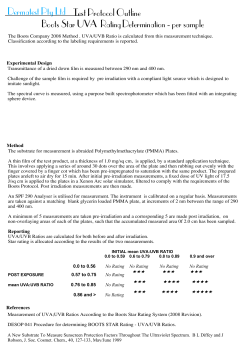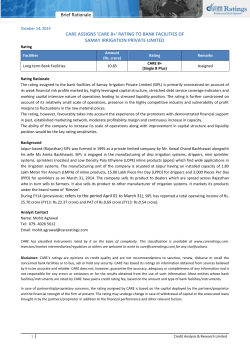
PRESENTED BY:- Ruchi Rani Anjali saini Kajal bhuwania
PRESENTED BY:Ruchi Rani Anjali saini Kajal bhuwania YEAR-11 The strategy adopted for year all the 3 year is ‘Differentiation’ strategy. In order to increase Earnings Per Share, Return on Equity, Credit rating and image rating of the company from the previous year Objective: To maximize the profit and market value of the organization INTERNET SEGMENT In year 11 in all the regions i.e. North America, Europe-Africa, Asia-Pacific and Latin America, the price and the models offered of the online products was kept same as year 10 but increased the SQ rating from 5stars to 6 stars to attract more customers for online shopping. The advertisement budget was also increased. There was no free shipping offered as increasing the net profits and net revenue was the main aim. The competitors offered a lower price than the price offered by F company and also increased the SQ rating. Due to this the market share decreased from year 10(12.5%) to year 11(8.7%) decreased. WHOLESALE SEGMENT Price was increased from the previous year as the products are catered to premium section of the society in all the regions. SQ rating: increased in North America as the customers want high quality products and the plant is also situated in North America. Whereas the SQ rating in Europe , Asia-Pacific and Latin America was kept same as year 10. Models availability: There was increase in no. Of models offered from 200 to 250 in all the regions. Advertising and Rebate offer: as the company increased no. of models/styles, it required higher advertising. Retail outlets and retailer support:there was no need to increase the no. of retailers as it would have lead to excessive demand which the company could not fulfil. Delivery time: the delivery time in North-America was cut down from 3 weeks to 1 week and in Asia-Pacific from 3 weeks to 2 weeks. The delivery time in other two regions were kept throughout the 3 years. Celebrity Appeal: as the advertising budget has increased every year, according to F Company there was no requirement of endorsing celebrity. Issue of stocks and plant up-gradation in North America PRIVATE-LABEL SEGMENT To increase EPS, return on equity and image rating we increased the price of private-label from average industry price in all the regions except Asia and kept the SQ rating same. This resulted in low market share even though the products were sold in all the regions. STRATEGY- YEAR 12 Objective: to maintain the Year 11 strategy and increase the market share and sales of the company INTERNET SEGMENT After analysing the competition in market for internet sales after year 11, we as co-managers decided to lower down the online prices and increase the no. of models offered as these are the main global determinants of the unit volume sold online. Free shipping was not offered as it effected the revenues drastically. The SQ rating of the pairs available in each region’s distribution centre was also increased with increase in company’s advertising budget. This change resulted in increase in market share in internet sales i.e. maximum market share (16.6%) in all the companies. WHOLESALE SEGMENT In North America, all the components are kept constant as year 11 to maintain the consistency of the company except expenditure on advertisements, which was increased in Year 12. This resulted in increase in market share of the company from year 11. After analysing competitors, In Europe-Africa the wholesale price for branded footwear in Year 12 was lowered down from year 11. Instead, there was an increase on expenditure on advertisements and mail-in rebates offered, which attracted more customers and resulted in increase in market share of the company. In Asia-Pacific region, again there was a decrease in price of wholesale branded footwear and increase in expenditure on advertisements, rebates and retailers support. Again there was an increase in market share and sales in this region as compared to year 11. Similar changes were done in Latin America region as were done in Asia-Pacific except no increment was done in expenditure on advertisements. The main aim in Year 12 was to increase the cash flows and sales of the company. For this some of the stock which was issued in Year 11 was repurchased in Year 12, which increased the ROE,EPS, image rating of the company. As a result of this change the default risk ratio changed from low to medium i.e. , interest coverage rate also increased and debt/asset ratio lowered down. PRIVATE-LABEL SEGMENT After analysing the competitors market strategy in year 11, we as co-managers decided to lower down the prices of the private label footwear and increased the SQ rating by 1 star. The change has consistent and not too drastic. Due to this the company was able to gain market share in private label segment. STARTEGY- YEAR 13 Objective- the main aim was to increase the market share and image rating as the other factors i.e. EPS, credit rating and ROE were as per investor’s expectations since year 11. INTERNET SEGMENT By gaining the maximum market share in Year 12, the main aim was to increase the market share in year 13 again. For this the price was lowered down and the models and advertising were increased. This resulted in maximum market share in internet segment i.e. 23.1 % which is a huge change from year 11 i.e. 8.6% in all the three regions except North America which had a greater percentage. WHOLESALE SEGEMENT From year 12 to year 13, there was increase in price of the branded footwear as the SQ rating, models/styles offered, advertising and retail support were increased in all the regions which again resulted in higher market share. The workers productivity was increased as more incentives were provided as increase in SQ ratings and there were less rejection rates due to up-gradation in North America plant. In year 13, to boost EPS, ROE and stock price, the company repurchased the shares. There was much increase in interest coverage ratio in year 13 than in year 12. The default risk ratio was maintained to medium level and debt/asset ratio decreased more which resulted in maintaining the credit rating. To increase the image rating of the company, corporate social responsibilities were also undertaken by the company such as ‘Ethics Training/ Enforcement for all employees’ to develop/enforce a code of conduct and ‘Workforce Diversity Program’ to achieve and maintain workforce diversity concerning age, sex, ethnicity and other factors. This was possible as company had enough ending cash and revenues in year 13 which were gained through year 11 & year 12. PRIVATE-LABEL SEGMENT Due to excessive competition from rivals and their greater market share in private-label due to very low prices, the co-managers decided not to provide private label in North America and Asia-Pacific region. A little private label was provided in Europe-Africa and Latin America as in the F company had good amount of sales in previous year. Even though strategy changed from gaining profits to gaining market share in year 11 & year 12, the company worked very consistently without making major changes in all the aspects like SQ rating was increased by 1 star every year. The reason for this strategy was to work towards long term goals and gain profit and always tried to increase EPS, ROE and credit rating in which the company exceeded the other rival companies in the business simulation exercise. In the simulation game there were different decision entries for all the geographic region of the world market. There were 8 entries where the projected no. were entered and at the bottom instant calculation was done. The bottom of the screen showed the net profits, earnings per share, return on equity and credit rating DEFINING PLANNING EXECUTING DELEIVERING • We as the co-managers defined the goals for the company year 10 onwards. We learnt how to perform the given tasks so that we don’t lose our sales, market share, revenues, retail networks and so on. • The game helped us to analyse all aspects of a company from sourcing to distribution • The game helped us in making projected sales forecast vis-a vis the industry average. The market snapshot gave better insight in number crunching and largely increasing the market share. • There were demand of different S/Q rated products, models and advertising. In the three decision period i.e Y-11,Y-12, Y-13 we were able to analyze the demand of the target group and served them better with the right kind of products and styles. BRANDED SALES FORECAST • Sales forecast for different regions were done by studying the industrial avg. and the company’s strategy. • Forecast was done on the assumption of the growth rate in the industry. • Inventory clearance decision were taken to get new styles. Capacity sales/upgrades/ additional decisions • This screen required to fill the decision regarding the plant up gradation • In both the years north America plant was upgraded. BRANDED PRODUCTION DECISION • This screen required to fill the entries in terms of production and how to achieve the desired S/Q rating. • How many pieces , models , how much to spend on plant up gradation was decided. BRANDED SHIPPING DECISION • As the plant being in north america and asia pacific the decision for shipping is an important factor for good inventory management INTERNET MARKETING DECISION • Due to different demands in the geographic region marketing of internet sales was important. • It was the direct competitor for the retailer. • More models were offered on internet to increase the S/Q rating. Whole sale distribution • In the wholesale distribution each as a strategy we increased one star every year to increase the S/Q rating. Private Label Decision • Private label decision helped to increase the market share. • Bidding was done for different regions depending upon the competition Finance decision and cash flows • The finance decision was important to maitain a high interest coverage ratio, low default risk ratio in order to maintain high credit rating, image rating and high EPS.
© Copyright 2025











